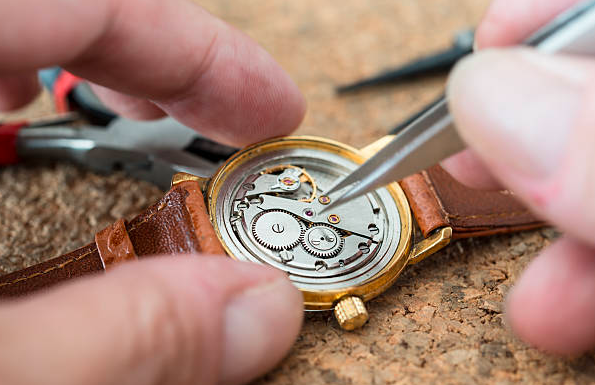The Watch Crown: Functions, Types, and Care

The watch crown is a critical part of a watch’s design, serving multiple purposes essential to the timepiece’s operation. This article provides an in-depth look at the Watch crown including its functions, types, and tips for proper care.
What is a Watch Crown?
The watch crown is a small, protruding knob located on the side of the watch case. It is primarily used to perform several key functions, such as setting the time, adjusting the date, and winding the watch. Despite its modest size, the crown is integral to the watch’s functionality.
Functions of the Watch Crown
- Time Adjustment:
- The watch crown is mainly used for setting the time. By pulling the crown to its outermost position, users can rotate it to adjust the hour and minute hands to the correct time.
- Date and Day Setting:
- Many watches have date and/or day functions that can be adjusted using the crown. This often involves pulling the crown to a specific position and turning it to set the desired date or day.
- Winding the Watch:
- For mechanical and manual watches, the crown is used to wind the mainspring, which powers the watch. Automatic watches can also be manually wound using the crown if they have stopped.
- Additional Features:
- In watches with additional complications, such as chronographs or dual time zones, the crown may be used to operate these functions. It often works in conjunction with pushers or secondary crowns for specific features.
Read also: Discover the Best Technical Solutions for Your Business
Types of Watch Crowns
- Push-Pull Crown:
- The most common type, which can be pulled out to different positions for setting the time or date. It is pushed back in to ensure it is properly secured against the watch case.
- Screw-Down Crown:
- Designed to provide extra water resistance, this crown screws into the watch case. It needs to be unscrewed for adjustments and screwed back in to maintain a watertight seal. It is commonly found on diving watches.
- Onion Crown:
- This crown features a rounded, domed shape, often seen in vintage or luxury watches. Its larger size makes it easier to grip and operate, adding a distinctive aesthetic.
- Twin-Pusher Crown:
- Found on chronograph watches, this crown is used in combination with two pushers to manage the chronograph functions, such as starting, stopping, and resetting the chronograph.
Care and Maintenance of the Watch Crown
- Regular Cleaning:
- Clean the crown with a soft, dry cloth to remove dust and debris. Avoid using water or cleaning agents that could damage the crown or watch case.
- Prevent Water Damage:
- Ensure the crown is securely positioned to prevent water from entering the watch. For non-water-resistant watches, keep the crown away from moisture to avoid damage.
- Handle with Care:
- Use the crown gently to avoid damaging it or affecting the watch’s internal mechanisms. Avoid excessive force when adjusting the time or date.
- Seek Professional Help:
- If you encounter problems with the crown’s operation or the watch’s timekeeping, consult a professional watchmaker. Regular servicing can help address any issues and ensure the watch remains in good working condition.
Conclusion
The watch crown, though small, is a vital component of a timepiece, playing a key role in setting the time, adjusting the date, and winding the watch. Understanding its functions, types, and proper care can enhance your appreciation of your watch and ensure its longevity. By following the maintenance tips provided, you can keep your watch crown in optimal condition and ensure your timepiece continues to perform accurately.



